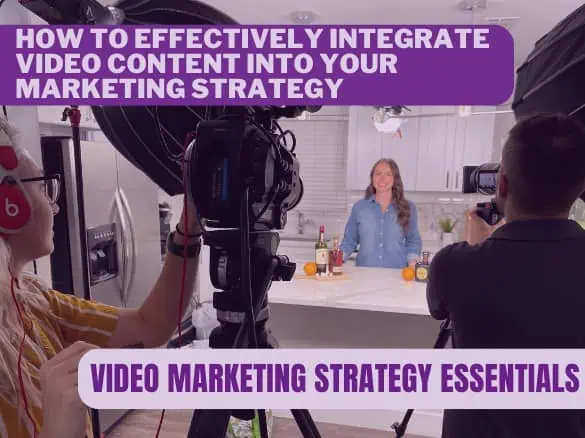How to Integrate Video Content into Your Marketing Strategies Effectively
Video content has become a cornerstone of many successful marketing strategies, particularly for large organizations looking to capture and engage audiences. Executives and marketing leaders now recognize the impact that video can have on their brand’s visibility and consumer engagement.
For companies with annual revenues exceeding $25 million, the strategic integration of video content into marketing efforts isn’t just an option; it’s imperative for staying competitive and relevant.
Understand Your Video Objectives to Enhance Related Strategies
Before diving into the production of any video content, it’s critical to define what you want to achieve. Are you looking to increase brand awareness, or is your goal more about conversion and lead generation? Perhaps you aim to educate your audience about your products or services, or you need to enhance your customer support with explainers.
Each objective will dictate a different approach in style, messaging, and distribution channels. For executives deciding on a strategic level, aligning video objectives with business goals ensures that investments in your content yield measurable returns.
Analyze Your Audience
Understanding who you are targeting is key. Large organizations often serve diverse markets, and video content should be tailored to the specific demographics, preferences, and behaviors of different audience segments. Analyze your current customer base and use data-driven insights to create buyer personas.
For each persona, consider what type of content would be most engaging, whether it’s a high-energy promotional video, a detailed product demonstration, or a behind-the-scenes look at your company culture. Remember, a one-size-fits-all approach rarely works in personalized marketing.
Develop a Content Calendar Within All Strategies
Third, consistency is key in maintaining the attention of your audience and maximizing the impact of your video marketing efforts. Develop a content calendar that schedules content releases throughout the year. This should align with key business events, product launches, or seasonal peaks in your industry.
For social media experts at large companies, this calendar will help coordinate video content with social media campaigns, ensuring consistent messaging across all platforms.
Choose the Right Production Partner
For those considering hiring a video production company, choosing the right partner is critical. The ideal company should not only have technical expertise but also a profound understanding of corporate marketing dynamics. They should be able to offer innovative ideas that perhaps challenge traditional norms but still resonate with your target markets.
A good partner will help you navigate the complexities of video production, from concept development through to execution, ensuring that the final product is polished, professional, and on-brand.
Leverage Multi-Channel Distribution
Having a multi-channel distribution strategy is essential. This involves more than just uploading to YouTube; it means strategically placing your content across multiple platforms where your audience is most active, including social media, your company website, email newsletters, and even paid advertising channels. Each platform may require different formats or messaging tweaks to optimize engagement and effectiveness.
Measure and Optimize
Educate Your Team About Your Strategies
For organizations looking to replace an internal team or contemplating between hiring an in-house expert versus an external agency, it’s important to educate your existing marketing team about the benefits and processes of video marketing. Training sessions, workshops, or even collaborating with experienced video marketers can elevate your team’s capabilities and ensure everyone understands how this content fits into the broader marketing strategy.
Final Thought
For businesses, particularly those with significant revenues, integrating video content strategically into marketing efforts is not just about keeping up with trends. It’s about taking a proactive approach to engage customers, enhance brand perception, and drive business growth.
By understanding your objectives, knowing your audience, planning content strategically, choosing the right production partner, leveraging multi-channel distribution, continuously measuring impact, and educating your team, you can ensure that your content serves as a powerful tool in your marketing arsenal.
Related Articles
Four Strategies for Video Marketing on LinkedIn
Improving Your Marketing Strategy
SEM Rush: Video Marketing Tips
5 Reasons To Include Video in Your Marketing Plan & Strategy










